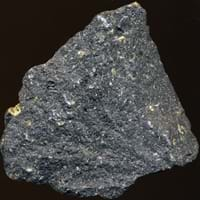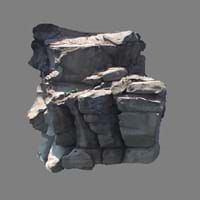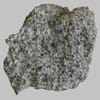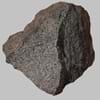Basalt and Comendite
Definition
Definition
Basalt is a common extrusive igneous rock formed by the rapid cooling of basaltic lava exposed at or very near the surface of Earth
Comendite is a hard, peralkaline igneous rock, a type of light blue grey rhyolite
History
Origin
Egypt
Italy
Discoverer
Georgius Agricola
Unknown
Etymology
From Late Latin Basaltes (variant of basanites ), very hard stone, which was imported from Ancient Greek Basanites
Comendite derives its name from the area of Le Commende on San Pietro Island in Italy
Class
Igneous Rocks
Igneous Rocks
Sub-Class
Durable Rock, Medium Hardness Rock
Durable Rock, Hard Rock
Family
Group
Volcanic
Volcanic
Other Categories
Fine Grained Rock, Opaque Rock
Medium Grained Rock, Opaque Rock
Texture
Texture
Glassy, Massive, Porphyritic, Scoriaceous, Vesicular
Porphyritic
Color
Black, Brown, Light to Dark Grey
Blue, Bluish - Grey
Maintenance
More
Less
Durability
Durable
Durable
Water Resistant
No
Yes
Scratch Resistant
Yes
Yes
Stain Resistant
Yes
Yes
Wind Resistant
No
Yes
Acid Resistant
Yes
Yes
Appearance
Dull and Soft
Foliated
Uses
Architecture
Interior Uses
Floor Tiles, Homes, Hotels, Kitchens
Countertops, Decorative Aggregates, Interior Decoration
Exterior Uses
As Building Stone, Paving Stone, Garden Decoration, Office Buildings
As Building Stone, As Facing Stone, Garden Decoration
Other Architectural Uses
Curbing, Whetstones
Curbing
Industry
Construction Industry
Arrowheads, As Dimension Stone, Cobblestones, Cutting Tool, Rail Track Ballast, Roadstone
Building houses or walls, Cement Manufacture, Construction Aggregate, for Road Aggregate, Landscaping, Making natural cement, Raw material for the manufacture of mortar
Medical Industry
Not Yet Used
Not Yet Used
Antiquity Uses
Artifacts, Monuments
Artifacts
Other Uses
Commercial Uses
An Oil and Gas Reservoir, Commemorative Tablets, Creating Artwork, Used in aquariums
Cemetery Markers
Types
Types
Alkaline Basalt, Boninite, High Alumina Basalt, Mid Ocean Ridge Basalt (MORB), Tholeiitic Basalt, Basaltic trachyandesite, Mugearite and Shoshonite
Rhyolite
Features
Has High structural resistance against erosion and climate, Very fine grained rock
Very fine grained rock, It is One of the Oldest, Strongest and Hardest Rock
Archaeological Significance
Monuments
Used
Not Yet Used
Famous Monuments
Easter Island in the Polynesian Triangle, Pacific Ocean, Gateway of India in Mumbai, India, Gol Gumbaz in Karnataka, India
Not Applicable
Sculpture
Used
Not Yet Used
Famous Sculptures
Data Not Available
Not Applicable
Pictographs
Used
Not Used
Petroglyphs
Used
Not Used
Figurines
Used
Not Yet Used
Fossils
Absent
Absent
Formation
Formation
Basalt forms when lava reaches the Earth's surface near an active volcano. The temperature of lava is between 1100 to 1250° C when it gets to the surface.
Comendite is a type of Igneous rock which is formed due to cooling and solidification of lava or magma. It may form with or without crystallization, either below the surface as intrusive rocks or on the surface as extrusive rocks.
Composition
Mineral Content
Olivine, Plagioclase, Pyroxene
Albite, Amphibole, Quartz
Compound Content
Aluminium Oxide, CaO, Iron(III) Oxide, FeO, Potassium Oxide, MgO, MnO, Sodium Oxide, Phosphorus Pentoxide, Silicon Dioxide, Titanium Dioxide
Al, Fe, Potassium Oxide
Transformation
Metamorphism
Yes
Yes
Types of Metamorphism
Contact Metamorphism
Cataclastic Metamorphism, Regional Metamorphism
Weathering
Yes
Yes
Types of Weathering
Biological Weathering
Biological Weathering, Chemical Weathering, Mechanical Weathering
Erosion
No
Yes
Types of Erosion
Not Available
Coastal Erosion, Water Erosion
Properties
Physical Properties
Hardness
6
6-7
Grain Size
Fine Grained
Medium Grained
Fracture
Conchoidal
Pervasive
Streak
White to Grey
Bluish Black
Porosity
Less Porous
Highly Porous
Luster
Not Available
Dull
Compressive Strength
37.40 N/mm2
28
92.40 N/mm2
21
Cleavage
Not Available
Not Available
Toughness
2.3
2
Specific Gravity
2.8-3
2.38
Transparency
Opaque
Opaque
Density
2.9-3.1 g/cm3
Not Available
Thermal Properties
Specific Heat Capacity
0.84 kJ/Kg K
15
Not Available
Resistance
Heat Resistant, Pressure Resistant, Wear Resistant
Heat Resistant, Impact Resistant
Reserves
Deposits in Eastern Continents
Asia
India, Russia
China
Africa
South Africa
East Africa
Europe
Iceland
Italy
Others
Not Yet Found
Not Yet Found
Deposits in Western Continents
North America
Canada, USA
Not Yet Found
South America
Brazil
Not Yet Found
Deposits in Oceania Continent
Australia
Not Yet Found
Queensland
All about Basalt and Comendite Properties
Know all about Basalt and Comendite properties here. All properties of rocks are important as they define the type of rock and its application. Basalt and Comendite belong to Igneous Rocks.Texture of Basalt is Glassy, Massive, Porphyritic, Scoriaceous, Vesicular whereas that of Comendite is Porphyritic. Basalt appears Dull and Soft and Comendite appears Foliated. The luster of Basalt is not available while that of Comendite is dull. Basalt is available in black, brown, light to dark grey colors whereas Comendite is available in blue, bluish - grey colors. The commercial uses of Basalt are an oil and gas reservoir, commemorative tablets, creating artwork, used in aquariums and that of Comendite are cemetery markers.
|
||
|
||
|










